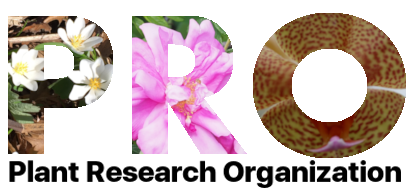
In the United States, an awaited change is taking place in the agricultural sphere. Hemp, a cultivated variety of Cannabis, is finding favor among farmers who are looking to cash into a new market.
Products using hemp range from clothing, paper, rope, cosmetics, medicine, food, and more recently biodegradable plastics.
Its relationship to marijuana caused hemp to be illegal in the United States for much of the late 20th century. Before this, hemp was crucial in the United State’s war efforts during World War Two, where states like Wisconsin lead the production of hemp necessary for the Navy’s rope and other military materials.

Marijuana and hemp are considered varieties of the same species, Cannabis sativa. Hemp, according to current standards, refers to the varieties of this species that is used for fiber and contains insignificant levels of the psychoactive cannabinoid THC (Tetrahydrocannabinol). Hemp is a common name, and is derived from a Germanic word for the Cannabis fiber crop – ‘die Hanf‘. The scientific name or genus, Cannabis, derives from old Middle Eastern/Mediterranean languages. This is apparent in the Hebrew word, ‘קנבוס’ (k-n-b-u-s), or the Arabic word, ‘قنب’ (k-n-b). The word Marijuana originates from the Spanish word ‘la marihuana‘, which was used by Mexicans to refer to the psychoactive varieties of Cannabis. In contrast, the Spanish word for hemp is ‘el cañamo’. In Spain marijuana has been called ‘cañamo indio’ to denote its origin from India and the orient, which is the reason behind the epithet ‘indica‘.
The differences between marijuana and hemp arise from its cultivation. Humans have selectively bred these two varieties to suite distinct needs. THC and other cannabinoids produced predominantly in the glandular hairs or trichomes of the plant mimic naturally occurring molecules in our bodies’ endocannibinoid system. Depending on the concentrations of Cannabis’ secondary plant compounds, these interactions result in a variety of synergistic medicinal and psychoactive effects. Hemp the whole spectrum of cannabinoids and some cultivated varieties (cultivars) surpass marijuana in its CBD (cannabidiol) content. Both marijuana and hemp varieties can be medicinal.

The changes and reintroduction of hemp into US agriculture has had many unintended consequences. Many have been toting hemp to be a completely different plant to marijuana in order to persuade anti-drugists to be in favor of the economic outcomes of Cannabis cultivation. In states that outlaw marijuana, current standard hemp farming practices require routine inspections and lab tests to confirm low quantities of THC to the tune of 0.3%. This largely political desire to remove the risk of THC abundance has enabled a push for breeding and/or genetically modifying the crop.
Due to the loss of harvesting and processing technology, cultivation techniques and the popularity of marijuana consumption, Cannabis that is grown and extracted for its non-psychoactive compounds for now considered Hemp. Marijuana and these varieties of hemp are nearly identical in appearance, since both are cultivated for its flower and are shorter in stature. The industry built around this crop, which is colloquially known as the CBD industry, has grown substantially, becoming a legal alternative to marijuana and resulting in excessive abundance of CBD smoke shops, CBD wellness products, and other novelties such as CBD infused beverages. This impatient commercialization of hemp crop has drowned out the advancements in the legalization of the fiber crop and its potential as a biofuel crop.

The reality is somewhere in between the two ideas of complete distinction and homogeny. This plant genus, Cannabis, left its place in Central Asia and has changed so drastically that many believe it to be constituted by separate species. Due to the advances of botanical studies and biology, varieties from the Cannabis genus have been crossbred to form robust mutants which favor the economic and environmental pressures of drug consumption in America and the rest of the developed world. Other varieties have been selected over generations to produce a Cannabis plant tailored to the climate of a region with its industrial use in mind.
The public is in the dark when it comes to Cannabis, and the confusion, only made sensible with an understanding of concepts like heredity, does not make it easy.
Further reading
Rothenberg, Erik. A Renewal of Common Sense: The Case for Hemp in 21st Century America. VoteHemp, Inc. March, 2001.https://www.votehemp.com/wp-content/uploads/2018/09/renewal.pdf
Hillig, K, and Mahlberg, P. A Chemotaxonomic Analysis of Cannabinoid Variation in Cannabis (Cannabaceae). American Journal of Botany 91(6). Pg 966-975. 2004. http://gro4me.com/966.pdf
Vogel, Eva. Hemp (Cannabis sativa L.) for Medicinal Purposes: Cultivation under German Growing Conditions. Universität Hohenheim. July 2017. https://www.researchgate.net/publication/326772237_Hemp_Cannabis_sativa_L_for_Medicinal_Purposes_Cultivation_under_German_Growing_Conditions
Benhaim, Paul. The Hemp Plastics Business. http://www.growingempowered.org/wp-content/uploads/2016/02/Hemp-Plastics-Industry.pdf
alexpopoff, Cannabis: using scientific or slang names? Accugentix. https://accugentix.com/blog/cannabis-using-scientific-or-slang-names/
Images
Katorisi, ‘Hemp-sack, Asabukuro, Japan’. Wikimedia Commons. July 16, 2007. https://commons.wikimedia.org/wiki/File:Hemp-sack,_Asabukuro,_Japan.jpg
Hörmann, Theodor. ‘Hanfwascherinnen bei Gödöllö, um 1884.’ Oberösterreichisches Landesmuseum, Linz. Edited by Matzner, Alexandra. ‘Theodor vor Hörmann. Impressionist aus Österreich: Von Paris zur Secession.’ Art in Words. May 7, 2016. https://artinwords.de/theodor-von-hoermann-impressionist-aus-oesterreich/
Nitrij, ‘Hanfstängel’. Wikimedia Commons. October 6, 2002. https://commons.wikimedia.org/wiki/File:Hanfstengel.jpg

